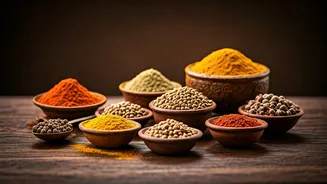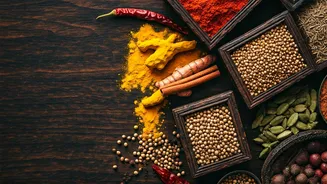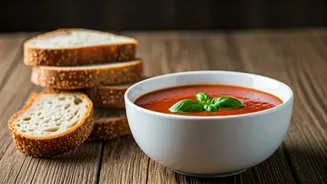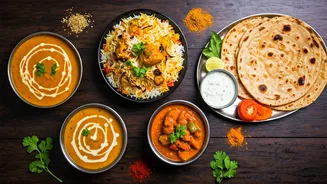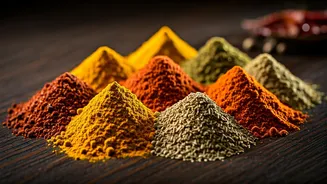Flavorful Regional Diversity
India's culinary landscape is vast, marked by unique flavors in different regions. In the north, creamy curries and tandoori dishes dominate. Think of
the richness of butter chicken from Punjab or the aromatic biryanis. Moving south, you'll encounter a world of spices, from the fiery curries of Kerala to the tangy sambars of Tamil Nadu. The east offers seafood delicacies, like the Bengali fish curries and the subtle flavors of the Assamese cuisine. The west brings its own magic, with the rich vegetarian dishes of Gujarat and the spicy seafood of Goa. This regional diversity means a wide range of ingredients are used – from rice to lentils, vegetables to meats – all expertly combined to create culinary masterpieces.
Spice: The Soul of India
Spices are at the heart of Indian food, adding color, flavor, and aroma. Common spices like turmeric, cumin, coriander, and chili are vital. These are ground fresh or used whole to release their aroma. The complexity arises from spice blends called 'masalas,' which give each dish its unique character. Garam masala, for example, gives warmth and depth, while chaat masala adds a tangy kick. The skillful use of spices is not just about taste but also about health; many spices have medicinal properties and aid digestion. This careful balance of flavors and ingredients has been passed down through generations, making the use of spices a true art form in Indian cooking.
Cooking Styles and Techniques
Indian cooking uses various methods that shape the taste and texture of the food. Tandoori cooking, with its use of a clay oven, is popular for giving a smoky flavor to meats and breads. Grilling is another favored method, bringing out the natural tastes of ingredients. Frying, both shallow and deep, is common, from the crispy samosas to the fluffy puris. The art of tempering, or tadka, is used to infuse oil with spices, which is then poured over dishes to add flavor. Slow cooking is an essential technique for curries and stews, allowing flavors to meld perfectly. Each method adds a different dimension to the dish, combining traditions with culinary creativity to create memorable meals.
The Cultural Significance
Food in India goes beyond sustenance; it's central to social events. Meals are a time for families and communities to gather, share, and connect. Festivals and religious celebrations are often centered around specific dishes, such as the sweet treats made during Diwali or the festive biryani prepared during Eid. Hospitality is highly valued, and offering food to guests is a way of showing respect and welcome. The preparation and sharing of food reflect cultural values, respect for traditions, and a sense of community. Each meal tells a story, conveying cultural identity and connecting people through their shared love of food and social gatherings.
Iconic Indian Dishes
Indian cuisine offers a wide array of dishes, each with a unique taste. Butter chicken, with its creamy texture and rich flavor, is a favorite. Biryani, with its layers of rice, meat, and spices, is another well-loved dish. Samosas, the crispy, savory snacks, are a popular choice, as are the various types of curries with lentils and vegetables. Dosas, the thin, fermented crepes from South India, are served with sambar and chutney. The variety is a testament to India's culinary diversity, with each dish representing flavors, and cultural aspects. From street food to restaurant fare, Indian food offers a world of flavors to explore.


